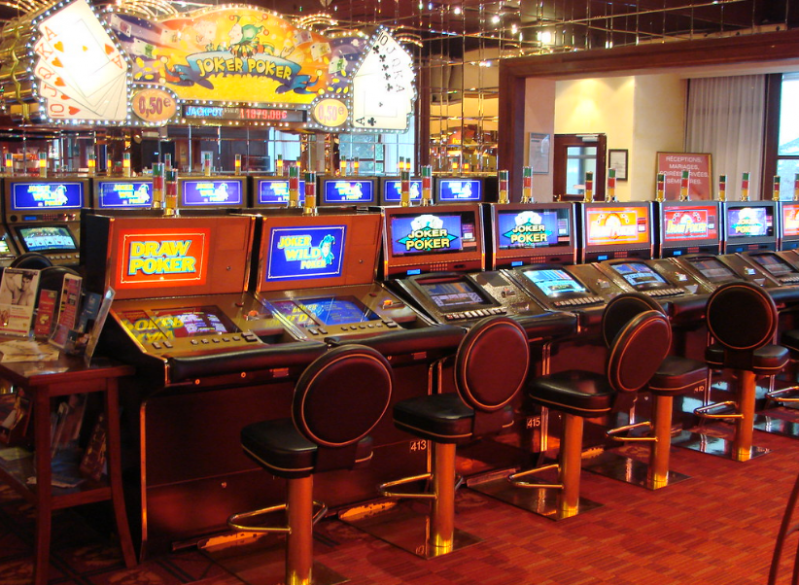
This world of casino games has experienced a remarkable evolution in past times, driven by tech advancements and shifting consumer tastes. As an increasing number of gamers shift to digital mediums for leisure, traditional casino activities are being adapted to satisfy the needs of a tech-savvy audience. This shift not just involves the transition from physical to digital environments but also encompasses the evolution of gameplay mechanics and user interaction strategies.
In this emerging virtual age, game developers are leveraging cutting-edge techniques to develop immersive environments that appeal with a varied range of players. From web-based fruit machines with stunning graphics to dynamic card games that replicate the atmosphere of a live gambling hall, the modification process is redefining how we perceive and enjoy casino activities. As we explore this captivating journey, it becomes clear that the future of gaming lies in the seamless integration of cutting-edge tech with the timeless appeal of chance and strategy.
A Progression of Casino Games
Casino games have undergone significant evolutions throughout the years, demonstrating shifts in tech, culture, and player preferences. In early eras, basic games of luck were played using rudimentary materials such as rocks and animal remains. As civilizations progressed, so did the sophistication of these activities. The emergence of playing cards in the Middle Ages marked a pivotal moment, culminating to the creation of popular games like poker and 21, which are still enjoyed today. Over the years, the design of gambling establishments has also changed, transitioning from tiny local locations to expansive, ornate establishments.
The twentieth century brought about a transformation in the world of casino entertainment with the advent of digital gaming. Fruit machines appeared as a popular draw, captivating players with their vibrant lights and sounds. This era also saw the emergence of casino resorts, which integrated luxury accommodations with a diverse array of casino options. The launch of video games further broadened the field, allowing for more complex designs and gaming mechanics. These innovations not only pulled in a broader audience but also altered the way gambling entertainment were experienced.
With the rise of the internet in the late 1990s and beginning 2000s, casino games entered a new digital phase. nohu90 Virtual casinos appeared, providing participants with the ease of playing from their own spaces. This transition required game designers to rethink traditional designs and modify them for an interactive online experience. Currently, advancements in technology, including smartphone gaming and virtual reality, persist to shape the progress of gambling entertainment, creating immersive experiences that engage gamblers like never before.
Primary Attributes of Digital Casino Games
Virtual gambling experiences have transformed the way gamers engage with the gambling experience by offering engaging experiences that replicate the thrill of physical casinos. One of the most important features is the integration of high-quality graphics and animations, creating a visually stunning captivating environment. Game creators focus on delivering lifelike themes and enthralling storylines that entice players into the game, boosting their overall experience. The capability to provide 3D visuals and stunning sound effects means that players can enjoy a dynamic atmosphere akin to what they would encounter on a casino floor.
Another important aspect of virtual casino experiences is the ease of access they offer to gamers worldwide. Web-based services enable individuals to play their favorite games from the comfort of their own houses or on the go through portable devices. This flexibility is accompanied by a wide variety of game options, including video slots, table games, and live dealer experiences. Players no longer need to travel to a casino to enjoy their beloved betting experiences, allowing a wider audience to engage with gaming.
Lastly, digital casino games frequently incorporate innovative features such as engaging gameplay and social interactions. Many games now allow players to compete against one another, enter tournaments, or even post their achievements on online platforms. This shift encourages a community spirit among players while promoting friendly competition. Additionally, features like personalized avatars and in-game chat options boost social interaction, making the digital gaming experience even more thrilling for all users.
The Outlook of Online Gaming
When technology continues to evolve, the landscape of online gaming is set for significant change. Immersive and enhanced reality are disrupting the industry, offering players an engaging adventure that mirrors the excitement of being in a physical casino. These advancements create opportunities for game designers to introduce innovative game formats and dynamic elements, reshaping how players interact with their preferred casino games.
Furthermore, the integration of AI is elevating user experiences and personalizing gameplay. AI can analyze player behavior, offer tailored game options, and improve customer support through chatbots. This personalization not only keeps players engaged but also helps build a loyal community around specific casino platforms, placing them for success in a competitive market.
Ultimately, the rise of mobile gaming is another key factor shaping the future of online gaming. With an constantly rising number of players playing casino games on their phones, game designers are focusing on optimizing their platforms for mobile use. This shift allows players to enjoy casino games anytime, paving the way for a more dynamic and accessible gaming environment that appeals to a wider audience.